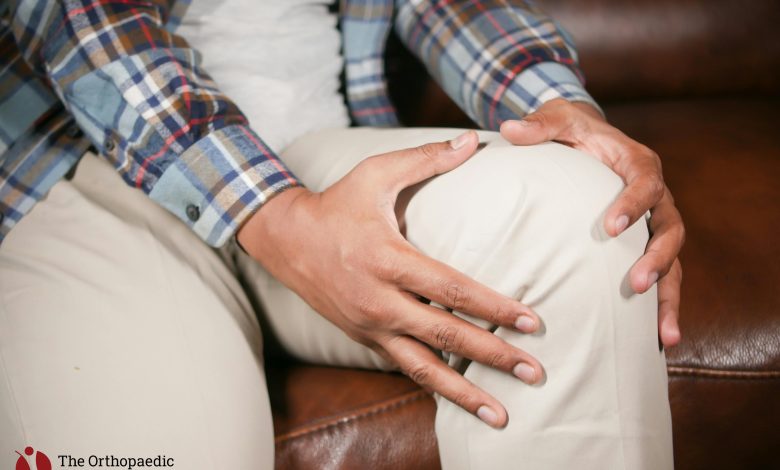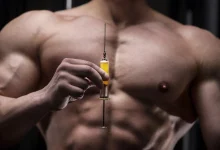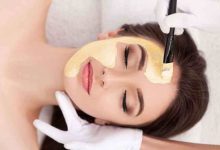Herbal Remedies: Complementary Therapies for Knee Pain

Understanding Knee Pain
But knee pain can often occur without trauma, and one common reason is due to biomechanical problems. This essentially means a poor function of the knee joint due to problems with the structure of the joint or surrounding muscles and tendons. An example is having one leg of unequal length to the other. This can cause pain in one knee due to the uneven distribution of weight. Another example is poor knee cap tracking due to muscle imbalance of the quadriceps. This can cause pain around the knee cap due to increased pressure.
There are many causes of knee pain, ranging from simple acute trauma to more complex medical conditions. In many cases, the cause of the pain and the onset can be obvious, such as after an injury. Considerable force goes through the knee joint to an extent where it can bear 8 times the body weight during an activity such as running. This force and pressure leave it vulnerable to fractures, tears, and dislocation of the patella.
Causes of Knee Pain
The causes of knee pain are numerous. One or more of the following may be the reason for somebody’s knee pain. Sometimes it can be difficult to determine the cause of the pain, for it may be a culmination of several different factors. A common cause of knee pain is traumatic injury. In younger people, knee pain is commonly caused by an injury such as a severe knock or due to an overuse injury. These injuries cause damage to the cartilage and bone within the knee. Sometimes these injuries cause internal derangement of the knee and this may require surgical intervention. In older people, traumatic injuries are often the commencement of arthritis in the knee. Arthritis is one of the most common causes of knee pain. Knee pain caused by arthritis is particularly prevalent in Western societies where osteoarthritis is one prevalent form of arthritis caused by the longer life expectancy and higher rates of obesity. Other forms of arthritis include rheumatoid arthritis and gout. Rheumatoid arthritis primarily affects the synovial membrane and can cause deformity of the knee. Gout, a systemic disease caused by the build-up of uric acid, usually affects the knee by inflammation of the synovial with urates and deposition of chalkstones in the knee joint. This causes severe pain and inflammation. Another common cause of knee pain is due to problems with the alignment of the knee. A knee that is either crooked or bent there is generally more pressure exerted onto one part of the knee rather than being evenly distributed. This may be a cause of pain and can also lead to other conditions such as osteoarthritis. An example of another condition that causes knee pain is patella tendon lesions and osteoarthritis. This occurs by repetitive application of load or impact on the patella tendon especially in jumping activities. Patella tendon lesions are very painful and may lead to chronic knee pain. Osteoarthritis is a degenerative condition and may need knee joint replacement.
Symptoms of Knee Pain
Pain is the most common and apparent symptom. There can also be inflammation of the knee, which is warm to the touch and may have red streaks on the affected area. Acute knee pain, or sudden intense pain, often comes with an obvious injury, for example, an anterior cruciate ligament injury. This can sometimes feel like the knee is giving way because the pain is so intense. Depending on how severe the injury is, pain from a torn meniscus can be sudden or develop over a few days. A mild to moderate meniscus tear can cause swelling after the initial injury. If left untreated, the knee can “lock up” and not allow full range of movement. With a severe tear in a portion of the meniscus where there is poor blood supply, the person may develop acute, intense pain on the inner side of the knee, and the knee may give way. This type of symptom is often a case in older adults with degenerative knee changes. A total inability to move the knee is common with a serious tear. Pain from arthritis is often due to gradual wearing away of the cartilage resulting in bone-on-bone contact. The pain is generally a result of inflammation of the surrounding joint tissue. There are periods where the knee will feel better, only to have increased pain with more activity. Twisting and turning motions can cause sharp pain and a feeling of instability in arthritic knees. People have described a grinding sensation on the knee as if there were gravel under the skin.
Complementary Therapies for Knee Pain
Overall, herbal remedies are a potentially cost-effective therapy for knee pain with a low risk of side effects compared to long-term use of drugs or other invasive therapies. Efficacy of different herbs will vary with respect to individual patients and it may require some trial and error to determine the best remedy for a particular person.
Due to the lack of regulation and product quality standards in the herbal medicine industry, it is commonly difficult to find good quality herbs locally. It may be necessary to obtain high-quality herbs from an internet vendor that can provide a certificate of analysis and other quality assurance tests. After obtaining the herbs, it is important to take them as directed and monitor their effect on the symptoms to determine their effectiveness. Pricing of herbs can vary widely and some remedies may be expensive. Many health insurance plans that fund prescription drugs may cover the cost of some herbal remedies if it is backed by a physician’s recommendation.
Herbal therapies can come in many forms including pills, capsules, tinctures, teas, and salves due to the large variance in the solubility and chemical composition of different herbs. Step one to using an herbal remedy would be to consult with an herbalist, naturopathic physician, or other knowledgeable healthcare professional due to the varying degrees of effectiveness and potential side effects of different herbs. Step two would be to identify the source of the herbal remedy. This is an especially important step as the success of an herbal remedy is directly related to the quality of the herb and the way it is processed.
As stated earlier, osteoarthritis is the most common cause of knee pain and is the major reason why people use knee replacements. There are many anti-inflammatory and analgesic herbs that have a long history of use in the treatment of arthritis and joint degenerative conditions. Some of the more popular herbs include Willow bark (Salix alba), Devil’s claw (Harpagos procumbens), Feverfew (Tanacetum parthenium), St. John’s wort (Hypericum perforatum), Turmeric (Curcuma longa), and Celery seed (Apium graveolens). These herbs can benefit people with knee pain by reducing inflammation in the joints and muscles and easing the pain caused by the inflammation. This can mean that the avoidance of taking NSAIDs to control pain and inflammation, which may lower the risk of exacerbating the joint degenerative process.
Until recently, the use of herbal remedies has been largely ignored by Western healthcare professionals. However, public opinion is changing due to increasing information and research that has supported the use of certain herbs as a successful alternative to chemical drug therapies. There have been many case studies and research trials recently that have shown great success in using herbs to aid in the treatment of arthritis.
Herbal Remedies for Knee Pain
Glucosamine and Chondroitin Glucosamine and Chondroitin are precursors in the formation of cartilage and have become a popularly accepted treatment for knee OA. Due to their ability to reduce pain and increase function in OA, the natural decline of glucosamine and chondroitin levels with age and some indication of disease modification, it is also now being recommended by NICE as part of a core treatment for OA. Although widely used, their effectiveness has, however, been clouded by inconsistencies in study trial data, most likely due to variations in formulation, dosage, severity of knee pain, and study longevity. A recent review found that the combination of glucosamine and chondroitin was effective in pain relief for knee OA, however, no better than placebo on larger long-term RCTs. Both substances are well tolerated; GI discomfort reports are slightly higher than placebo, and it is recommended that they be avoided in patients with diabetes or an increased bleeding risk.
Devil’s Claw Devil’s Claw has been traditionally used in the treatment of arthritic conditions. It has been cited as having anti-inflammatory properties, although the mode of action is unclear. It is believed to have pain-relieving properties, and in a trial of 122 patients with knee and hip OA compared to an equivalent dose of diacerhein, Devil’s Claw significantly reduced pain by 35% and increased mobility in patients after 4 months of treatment. A more recent RCT comparing Devil’s Claw extract and placebo in 175 patients showed no significant difference in pain relief or functional improvement. Although generally safe to use, some patients have reported minor GI discomfort.
Despite the use of herbal remedies as a popular alternative to conventional treatment, scientific evidence for their efficacy in knee pain is sparse. Many herbal remedies have been used historically and trigger few adverse effects, but controlled trials for use in knee pain are few. In the following section, we review the more popular herbal remedies evaluated for treatment for knee pain.
Benefits of Herbal Remedies
The most common forms of herbal treatment are with the use of a capsule and an ointment. Many types of herbal capsules are taken orally and provide a general anti-inflammatory action for the whole body, and will therefore relieve the inflammation which causes knee pain. More specific non-steroidal anti-inflammatory capsules can also be used to relieve inflammation. Joint pain and inflammation can also be relieved by the application of an ointment directly onto the affected area. This can be achieved immediately after heating the joint or having a hot bath since the skin pores will be open and the absorbance of the ointment is maximized. This type of treatment is particularly effective for knee pain since most remedial actions are based on relieving the inflammation and the deformities that cause the pain.
Herbal remedies are particularly suitable for knee pain, as they have a direct impact on the affected area. The general benefits of herbal remedies include expense and relative effectiveness, with few side effects. They are cheap compared to a course of therapy like physiotherapy, and often relieve symptoms more effectively. Since knee pain is often chronic, and some of the conditions that cause knee pain are degenerative, coping with knee pain may be a long-term objective. This makes herbal remedies an attractive option because of the sustained relief and the fact that their long-term use is not associated with heavy expense or side effects. They also have the advantage of being a readily available treatment that people can organize themselves.
Precautions and Considerations
An additional consideration to take into account is cost. It is often assumed that herbal therapy is a less expensive alternative to conventional treatment; however, this is not necessarily true. Costs vary with different remedies and brands. It can also be costly in the trial and error process if one remedy is found ineffective and the patient moves on to another. This is especially important for patients with limited incomes and have difficulty affording basic healthcare.
Herbal therapy is not a quick fix to knee pain and requires patience. The patient should always give it a fair time period before deciding if it has helped or not. Finally, and most importantly, herbal therapy should never deter the patient from weight loss and exercise, which has been proven to be the most effective treatment for knee osteoarthritis.
Herbal preparations provide several benefits as discussed above; nevertheless, there are some precautions which have to be kept in mind before starting therapy. The patient should first of all discuss this with his healthcare provider to weigh the benefits over risks and how herbal therapy will interact with other therapies the patient is receiving. Herbal remedies should be avoided during pregnancy; it should also be kept away from young children because research on most herbs is limited and recommendations on children’s usage are often not available. The patient should always start on the lower dose of recommended herbal preparation to see how it may affect him. This is especially important with knee patients in the need to prevent GI side effects such as gastritis or peptic ulcers.
Consulting a Knee Pain Doctor in Singapore
When home remedies and lifestyle changes can no longer keep your knee pain at bay, it is time to seek professional help. This chapter will guide you through the process of finding the right knee pain doctor Singapore for your condition and understanding what to expect from a consultation. After taking a thorough history of your symptoms, a knee pain doctor will usually perform a physical examination to determine the cause of your knee pain. He may press around your knee to see if the pain is located in a specific area, check the range of movement of your knee, and test the strength of the muscles around the knee. In some cases, it may be necessary to perform certain special tests such as removing some fluid from the knee joint or ordering some investigations like X-rays or an MRI scan. Once a diagnosis is reached, the knee pain doctor will usually explain the nature of your condition and discuss the best treatment options for you. This may involve a referral to another specialist such as a physiotherapist or orthopedic surgeon. A knee pain doctor is qualified to treat the majority of knee conditions. If, however, your knee pain doctor feels that your condition is best treated by another specialist, he will make the necessary arrangements for a smooth transfer of care.
Importance of Seeking Professional Help
The role of allied health professionals such as physiotherapists and occupational therapists in managing knee pain is also important. Some studies have shown that there is an overreliance on knee surgery and that conservative management such as physiotherapy has been underutilized. Physiotherapy or supervised exercise therapy is effective for many types of knee pain and are essential components of treatment for conditions such as knee osteoarthritis. Physiotherapists are able to help people lose weight and strengthen the muscles around the knee. This is often effective in relieving symptoms and may help to prevent the progression of certain knee conditions. Unfortunately, the effectiveness of physiotherapy can be limited if patients are only given a few sessions or are unable to adhere to a supervised program. This may be due to financial constraints, time constraints, and in some cases, closure of public healthcare and community services. Note that the cost of treatment is not an accurate indicator of its effectiveness. In some instances, expensive injections and surgery may not be as effective as cheaper forms of treatment. A study looking at the Australian healthcare system has estimated that a large number of knee arthroscopies done in Australia are of questionable value and are no better than a placebo or fake surgery. This is in comparison to very little advertising or promotion of physiotherapy services that may be more effective. It is then said that “you get what you’re given” and it appears that consumers are not being given the most effective forms of treatment. This is a topic that will be further discussed in the next section on finding the right knee pain doctor.
The importance of seeking professional help cannot be overemphasized. In this essay, an effort has been made to discuss the role of healthcare professionals in managing knee pain and the possible treatments they may prescribe. In the past, people with knee pain have been x-rayed and even operated on without much success or benefit. They may have been told that they have ‘bone on bone’ and that the only treatment left is a knee replacement. While it is true that there are some people with knee pain who will eventually need a knee replacement, this is generally not the case and it is often an unnecessary and irreversible procedure. Total knee replacements are in fact more common than in the past and at a relatively younger age. For many people with knee replacements, an earlier opinion and alternative treatment may have helped them to avoid or at least delay a knee replacement. As you can see, seeking professional help from the right healthcare professional is important so that an accurate diagnosis can be made and appropriate treatment can be administered, hence avoiding unnecessary surgery or medical procedures. In many cases, the GP or primary care doctor may be the first person to visit. He or she can be helpful in making referrals to see other healthcare professionals and is also able to prescribe some medications and advice on the use of walking aids.
Finding the Right Knee Pain Doctor
Duration of the injury or knee pain If the knee pain is minimal and has just started, seeing a general practitioner might be a good choice. Most of the general practitioners today have a basic understanding of the musculoskeletal system and will be able to provide advice as well as medication. However, if the condition of the knee has worsened or has been persisting for more than two weeks, it is recommended to seek a specialist. This is mainly because a specialist will be able to provide a more accurate diagnosis and has a better understanding of the problem, further providing a more effective treatment.
Consulting a knee pain doctor would be the best choice of action upon experiencing knee swelling, persistent or sudden knee pain. By accurately diagnosing the exact knee problem, the sufferer is able to benefit from the most effective treatment, further speeding up the recovery process. In order to do so, the knee pain doctor will have to utilize various tools. These can range from an MRI to a simple manipulation of the knee. To achieve the best results, it would be recommended to find an orthopedic surgeon as they will be able to provide a more accurate diagnosis through a variety of tools as well as having the skills to perform any surgery if necessary. In order to find the right knee pain doctor, you will need to take the following into consideration.









